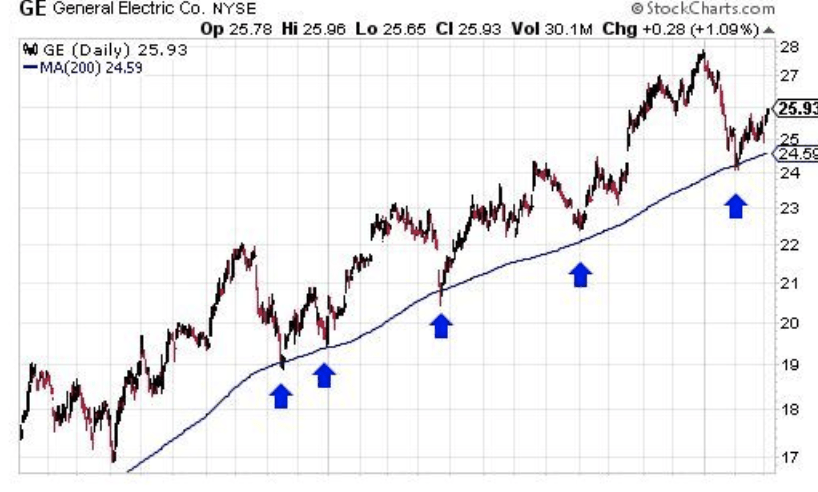Forex Indicators: Examining the Moving Average Indicator
A variety of Moving Average indicators are frequently used by forex technical analysts to help them make trading decisions in an online trading account. For example, Moving Averages can be used to smooth data in order to help a trader better identify the prevailing trend, or Moving Averages of different time periods can be used in combination to generate trading signals when they cross over one another.
The most common types of Moving Averages used by forex traders dealing through online forex trading brokers are simple, weighted and exponential moving averages. These different designations for moving averages refer to how the data points that make up the average are weighted. For example, a simple moving average weights each data point equally, while weighted and exponential moving averages tend to weight more recent data more heavily than more distant data.

Graphing the Simple Moving Average Indicator
Figure 1 below depicts a Simple Moving Average indicator plotted in red and superimposed on top of the price action for the exchange rate of the GBP/USD currency pair. The chart was created using the popular MetaTrader forex trading platform that is supported by many online forex trading brokers.
The exchange rate and Moving Average is plotted in the chart below for daily time periods, and the Moving Average indicator is computed for the fairly common 20-day time period that corresponds to roughly one month’s worth of trading days.
Figure 1: A daily bar chart for the GBP/USD currency pair plotted in black along with its 20-day Simple Moving Average Indicator that has been superimposed on top in red.
Computing the Simple Moving Average Indicator
The Simple Moving Average Indicator shows how a market’s average closing price observed over a particular time frame varies with time. For a currency pair, this is done by summing up a set of closing exchange rates, and then dividing by the number of time periods observed.
The equation used by forex traders and platforms offered by forex trading brokers to calculate the first term in a Simple Moving Average or SMA Indicator is:
SMA(n) = (P(1) + P(2) + …+ P(n))/n
Where n is the number of time periods observed, SMA(n) is the Simple Moving Average at time period n, and P(n) is the price observed at time period n.
To compute the following term in the Simple Moving Average series, a forex trader would just add the next price observed and drop the first price. This process is repeated until the present time period is reached, and the results are then plotted over the price action itself.
Using the Moving Average Indicator
The Moving Average Indicator is perhaps one of the best forex trader technical tools available, despite the fact that it is a lagging indicator of price movement. As a result, it has become very popular among professional currency traders operating in the Interbank forex market or those trading currencies through forex trading brokers as a trend indicator.
In particular, a forex company or an individual trader can use a Moving Average Indicator as part of their trading plan to smooth the price action. This can also help them discern the direction of the trend by ascertaining whether the indicator is sloping upward, downward or is hardly sloping at all.
Another potentially helpful way of using a Moving Average Indicator is to combine Moving Averages of more than one time period in order to generate trading signals. In this case, a shorter term Moving Average will typically be combined with a longer term Moving Average and the pair observed for any cross over points that signal a shift in the market’s direction.
In addition, longer term forex traders or an international business with a significant forex company exposure might compare how a currency pair’s benchmark 200-day Moving Average measures up to its current exchange rate to determine whether the long term trend is toward higher or lower exchange rates.
For more exclusive Online Forex News, follow us on Twitter or join us on Facebook.



























Comments (0 comment(s))